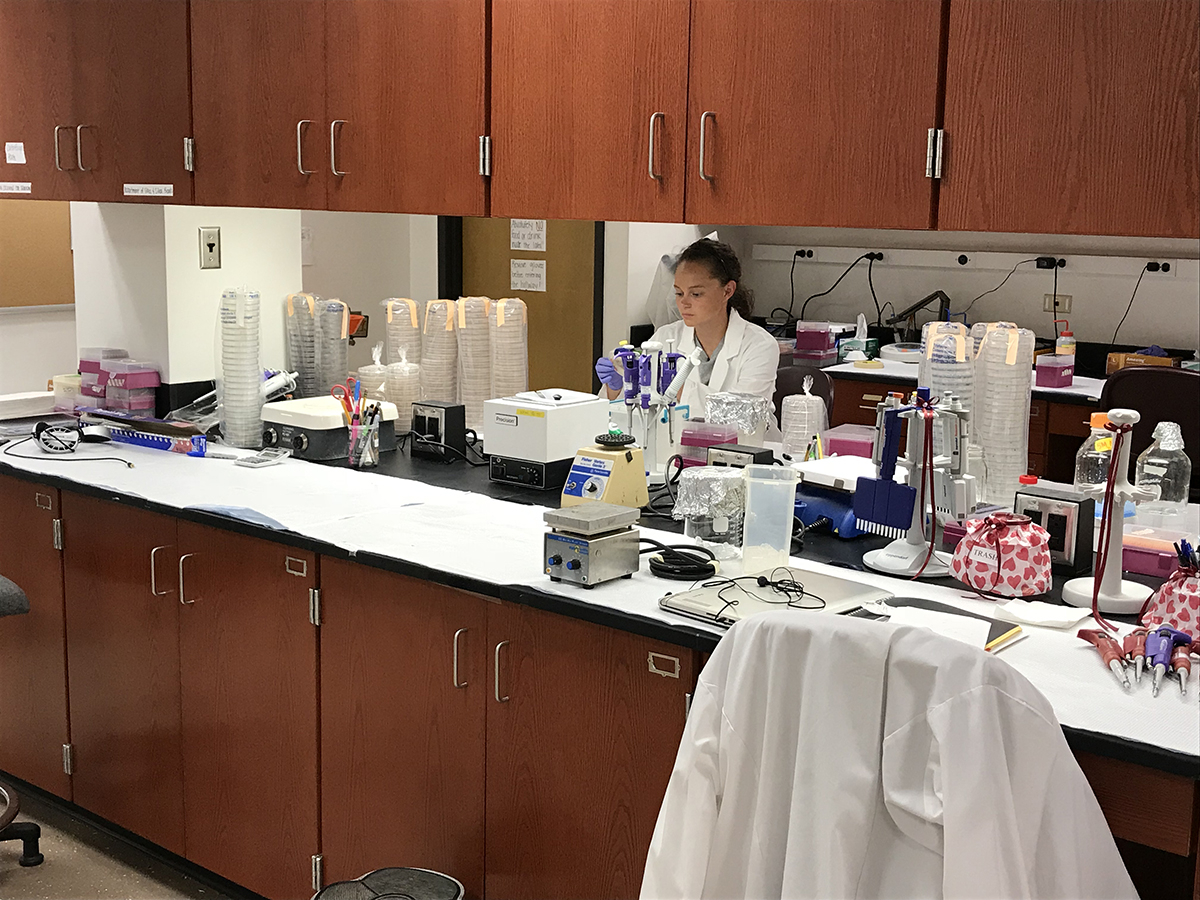
Lindsey McKinzie – Lindsey McKinzie working in a laboratory at Southern Illinois University Carbondale. (Photo provided)
August 01, 2018
The future of agriculture: using drones to fight crop diseases
CARBONDALE, Ill. — With the demand for food higher than ever, farmers don’t have time to struggle with plant diseases and crop failures. New solutions often pop up to improve these problems, but more progress is still necessary. That’s why Lindsey Mckinzie is hard at work using drones to find new solutions.
New technology helps farmers meet increasing demand
As the population grows, so does concern regarding sustainability and food production. More food cannot be grown using the exact same land, techniques and people. Adjustments are necessary to ensure that production remains at a high rate.
To do this, farmers are experimenting with precision agriculture; using information technology for mapping and spraying. This technique frequently employs unmanned aerial vehicles (UAV), commonly known as drones, to ensure that crops receive exactly what they need for optimum health.
McKinzie, a first year graduate student studying plant soil and agricultural systems at Southern Illinois University Carbondale, has spent her summer working with faculty to study the rate of diseases in row crop plots and experiment with the usefulness of UAVs.
Using drones to evaluate crop diseases
Approximately 30-40 percent of the produce from cultivated plants die each year from diseases. Farmers must remain constantly vigilant to guard their fields, which takes valuable time and resources. By using drones to evaluate the fields, the team at SIU hopes to speed up the process and make farms more efficient.
“We go through a plot that is showing disease, and we rate it on a scale of disease incidence and severity,” McKenzie said. “With the drones what we are hoping to find out, is if we can use them to rate the plots like we would with our eye.”
The rating system is on a scale from 1 to 10, and evaluates how many of the plants have symptoms of disease, and how severe those symptoms are.
The process includes flying the drones over the fields and taking pictures of the plants. The team then compares the UAV data with the ground collected data to determine the effectiveness of the drones, and later, to manage the health of the fields.
While drones are quickly becoming more popular in agriculture, this research, spearheaded by Jason Bond, professor in plant soil and agricultural systems, is unique in its purpose and design. Though still early in the process, the hope is to have the drone system perfected and ready for future work by next spring.
Making life easier for farmers
McKinzie has a very important goal for her work; make life easier for farmers who are already doing so much.
“I grew up on a farm, so I know some of the struggles my dad has gone through,” McKinzie said. “So I just want to be able to make these guys’ life easier and help them be the best producers they can be. That’s my number one goal.”
Drones are the future for agriculture, Mckinzie explained, and this project might be something the industry can use down the road to better support farmers and the global food economy.
